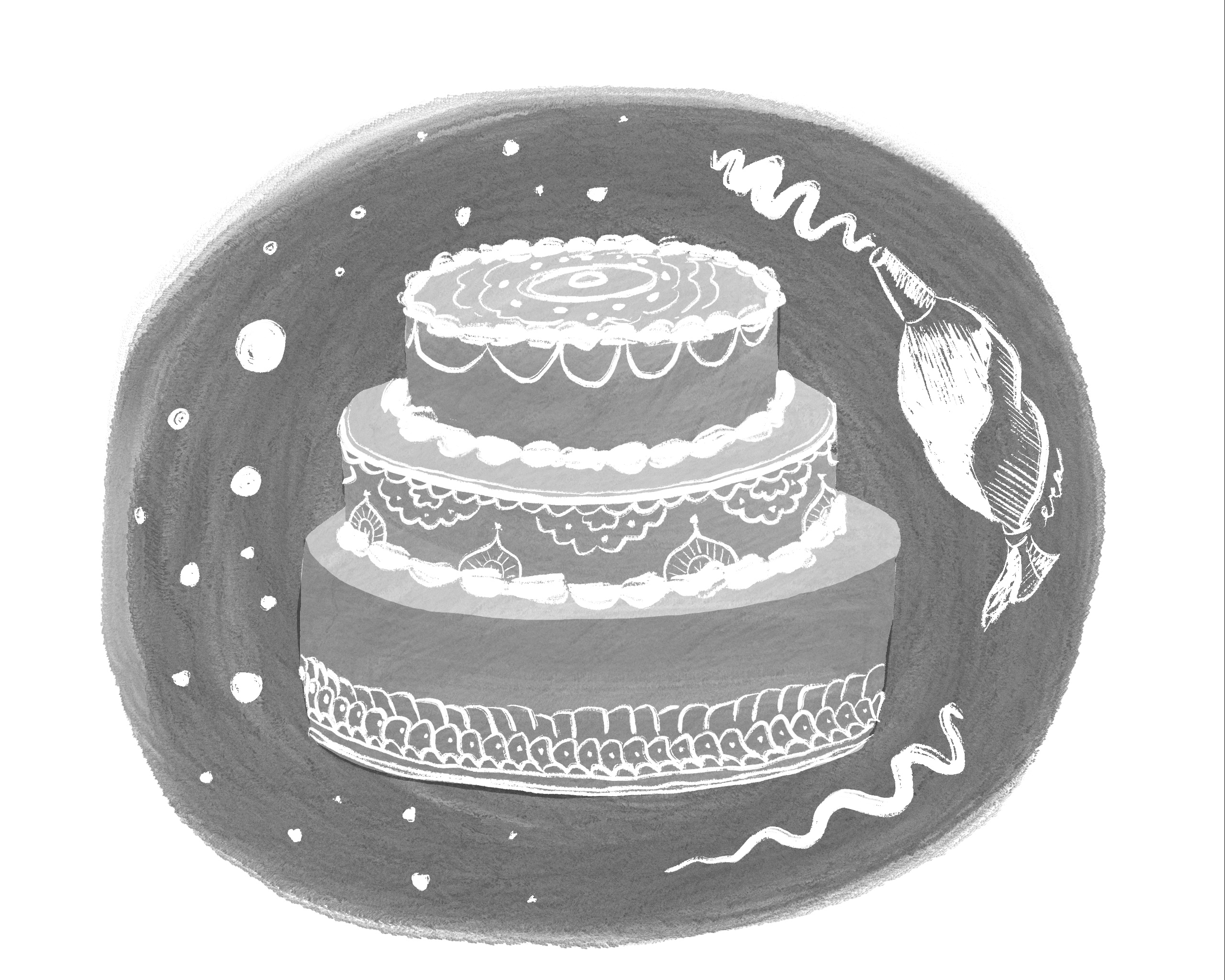Let them eat cake
April 7, 2023
 Eva Ahn
Eva AhnThe size of wedding cakes throughout history started out small, grew really big and now lands somewhere in the middle. Wedding cakes originated in ancient Rome, where a scone or barley cake would be cracked over the bride’s head to ensure luck and fertility. Then, the bride and groom would eat a couple of its crumbs. The Romans conquered Britain in 43 CE, bringing their wedding cake tradition with them. By the Middle Ages, wealthy families would stack multiple cakes of different varieties on top of each other as an obstacle for the bride and groom to kiss over. If they succeeded without toppling the mountain of goods, they were ensured luck in their marriage.
In line with the time-honored tradition of exponentially growing wedding cakes, Dessert Persons’ South Asian Student Association (SASA) mock wedding cake fulfilled expectations. We might not have piled together a bunch of little treats (although our most recent dessert does satisfy this requirement—stay tuned for the next column about croquembouche) or rain crumbs upon the wedding’s gorgeous grooms and beautiful brides. Instead, the two couples fed each other from a six-layered chai spiced cake, decorated with mehndi design and golden beads. The cake was not only an ode to the love and passion of a wedding but a celebration of South Asia’s rich culture and indelibly grand ceremonies.
Although there are differing traditions, most South Asian weddings share some common rituals and customs. They typically last for multiple days and include a mehndi ceremony where henna designs are applied to the bride’s hands and feet. SASA Wedding attendees had the opportunity to receive henna on their hands the day before the wedding. In South Asian tradition, the bride, groom, and families and friends then engage in a “sangeet” ceremony, where they perform dances and sing in unison. SASA’s mock wedding contained these elaborately structured dance performances, filling the room with music and movement.
The wedding was my roommate Victoria’s first time in a college house basement. As she applied the final touches of cream cheese frosting, we worried that the cake might melt under the heat of the party. Thankfully, it held until after we had fed over a hundred people.
Most wedding cakes are no longer a traditional representation of luck in a marriage but a celebration of the joy that people share with one another at weddings. Although everyone at the SASA Wedding got only a small slice, we were able to enjoy the cake together. By the time we slowed our frantic cutting and distributing, we lifted our heads to see a room full of far fewer people than when the night started out. There were only three slices left.
As this was my first time being so intimately involved in a wedding—albeit a mock one—I left that basement feeling as if I had learned a little more about what love is. I realized that baking a wedding cake isn’t so different from a marriage itself. Like marriage, baking a wedding cake is daunting! It’s binding, supposedly infinite and requires absolute devotion.
On Friday, we planned to triple the recipe. By Saturday, we had septupled it. Originally, the cake was to be red and gold. After using an entire bottle of red food coloring, only to still end up with an enduring pink-colored cream, we shifted to a white and gold theme. On Sunday, the day of the wedding, we were going to sprinkle gold dust upon the tops of each layer. Instead, we sprayed it with a gold sheen. The cake took time and energy and, at times, sacrifice. But it was also an embrace of change and an embodiment of adaptability.
To marry someone is to devote yourself to a morphing figure with whom you agree to grow, learn from and build up. When I look at my parents, I know that all these years I’ve been alive, I’ve grown with them. They aren’t static characters, to me, or eachother. And when I look at my friends and my teachers and myself, I’m excited for all the possibilities we have before us.

Comments
Before submitting a comment, please review our comment policy. Some key points from the policy: